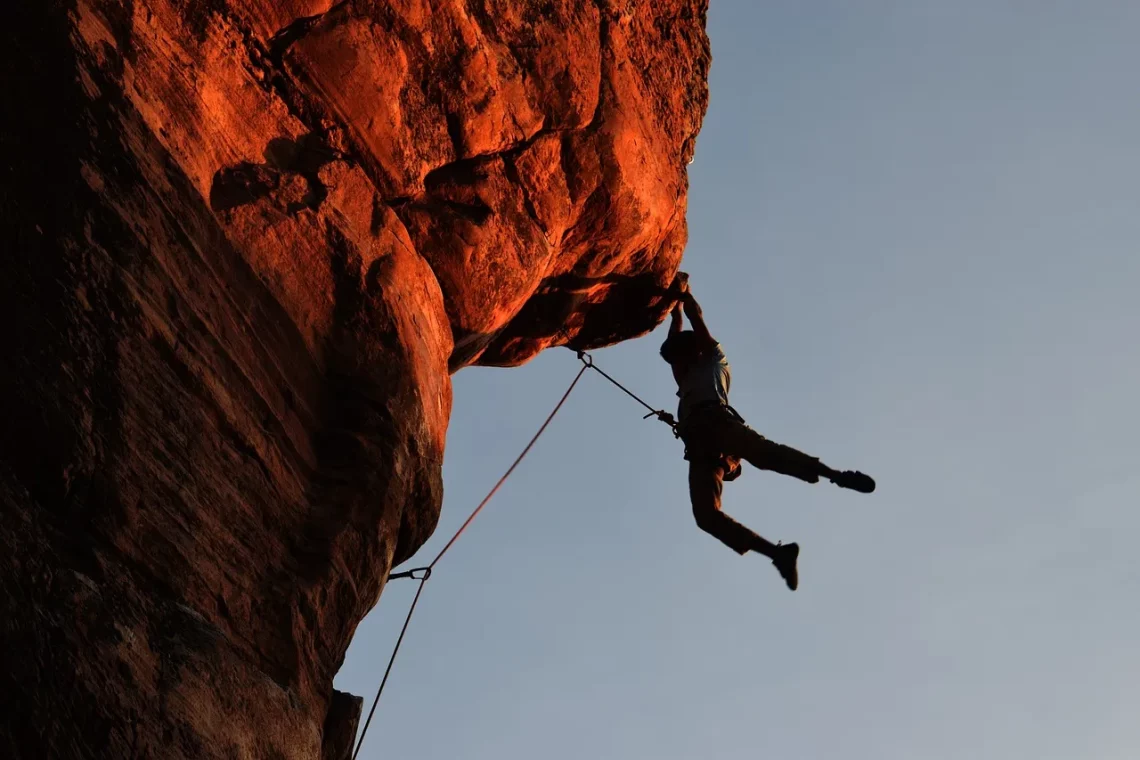
Exploring the Thrills and Techniques of Multi Pitch Climbing
Climbing has long captivated adventurers and outdoor enthusiasts alike, offering a unique blend of physical challenge and mental acuity. Among the various styles of climbing, multi-pitch climbing stands out as a thrilling testament to human endurance, skill, and the pursuit of conquering heights. This climbing technique involves ascending routes that are too long to be completed in a single rope stretch, often requiring climbers to navigate several pitches, or sections, of varying difficulty.
The appeal of multi-pitch climbing lies not only in the adrenaline rush of scaling towering cliffs but also in the camaraderie it fosters among climbers. As teams work together to ascend, they develop trust and communication skills essential for success on the rock face. Moreover, multi-pitch climbing offers a unique opportunity to immerse oneself in nature, providing stunning views and an unparalleled sense of achievement. Whether you are a seasoned climber or a curious novice, the exhilarating world of multi-pitch climbing invites you to explore new heights, both literally and figuratively.
The Basics of Multi-Pitch Climbing
Multi-pitch climbing encompasses a series of climbing segments, or pitches, that are connected by belay stations where climbers can rest before tackling the next section. Each pitch is typically between 30 to 60 meters long, depending on the route and the climbing environment. Understanding the basics of this climbing style is essential for anyone looking to venture into this thrilling activity.
Before embarking on a multi-pitch journey, climbers must familiarize themselves with the necessary gear. A standard multi-pitch setup includes climbing shoes for traction, a harness for safety, and a climbing rope long enough to accommodate the length of the pitches. Additional equipment such as carabiners, quickdraws, and protection devices like nuts and cams are also crucial for securing the climbing route. Each piece of gear plays a pivotal role in ensuring the climber’s safety and success.
In addition to gear, climbers must also hone their technical skills. Multi-pitch climbing often requires advanced techniques such as lead climbing, where one climber ascends first and places protection to safeguard their partner following behind. This method not only enhances safety but also allows climbers to tackle more challenging routes. Communication is key; climbers must develop clear signals and verbal cues to ensure a smooth transition between pitches.
Another critical aspect of multi-pitch climbing is route planning. Climbers should thoroughly research their chosen route, examining its difficulty level, potential hazards, and the weather forecast. Understanding the terrain and potential challenges can significantly enhance the climbing experience and ensure safety throughout the ascent.
As climbers gain experience in multi-pitch climbing, they often develop a deeper appreciation for the nuances of the sport. From mastering various climbing techniques to understanding the importance of teamwork and communication, multi-pitch climbing offers a comprehensive learning experience that extends beyond the physical act of climbing itself.
Safety Considerations in Multi-Pitch Climbing
Safety is paramount in any climbing endeavor, but it takes on added significance in multi-pitch climbing due to the complexities involved. Each pitch presents unique challenges, and climbers must be prepared for a variety of scenarios.
One of the primary safety concerns is the risk of falls. Climbers should always be aware of their surroundings and the location of their partner while climbing. Falling while leading can have serious consequences, making it vital for the lead climber to place protection securely and choose appropriate routes. Utilizing a dynamic climbing rope can help absorb the impact of a fall, reducing the risk of injury.
Belaying techniques are also critical in multi-pitch climbing. The belayer must be attentive and responsive to the climber’s movements. Communication between the climber and the belayer is essential to ensure that the belayer knows when to take in slack or lower the climber. Practicing these techniques in a controlled environment before attempting multi-pitch routes can enhance safety and build confidence.
Another safety consideration is weather conditions. Climbers should always check the forecast before heading out, as sudden changes in weather can lead to dangerous situations. Rain can make rock surfaces slippery, and thunderstorms pose additional risks. It’s essential to have a plan in place for retreating if conditions worsen.
Climbers should also be equipped with a first-aid kit and have basic first-aid knowledge. Accidents can occur, and being prepared to handle injuries can mean the difference between a minor setback and a serious situation.
Lastly, understanding the climbing community and adhering to established ethics is crucial. Climbers should practice “Leave No Trace” principles, respecting nature and the environment while also being considerate of other climbers on the route.
By prioritizing safety, climbers can fully immerse themselves in the experience of multi-pitch climbing, focusing on the thrill of the ascent while minimizing risks.
The Joy of Teamwork and Communication
Multi-pitch climbing is as much about teamwork as it is about individual skill. The dynamic between climbers can significantly influence the experience and outcome of the climb. Establishing trust and effective communication is essential, as climbers rely on each other for safety and support.
Successful teamwork begins long before the climb. Climbers should discuss their goals, strengths, and weaknesses, ensuring that everyone is on the same page. This initial conversation helps set expectations and fosters a collaborative environment. During the ascent, climbers must communicate constantly, using established signals or verbal cues to convey important information.
For instance, when a climber is ready to start the next pitch, they might call out, “On belay!” to signal to their partner that they are secured and ready to ascend. The belayer responds with “Climb on!” indicating that it is safe for the climber to proceed. Such clear communication reduces misunderstandings and enhances safety on the wall.
Trust is another critical component of teamwork in multi-pitch climbing. Climbers must have confidence in their partner’s abilities and judgment. This trust is built over time, often through shared experiences and challenges on the rock face. When climbers support one another, whether through encouragement or assistance with gear, they create a positive atmosphere that enhances the overall climbing experience.
Moreover, teamwork extends beyond the physical act of climbing. Many multi-pitch routes require strategic planning, where climbers must work together to assess the best path up the rock face. This collaborative problem-solving can be incredibly rewarding, fostering a sense of accomplishment when they reach the summit together.
The joy of teamwork in multi-pitch climbing can lead to lasting friendships and a deep sense of community within the climbing world. Climbers often share stories and experiences that bond them, creating a network of support that extends beyond the climbing experience itself.
In conclusion, multi-pitch climbing is not just about conquering heights; it is about the relationships forged and the lessons learned along the way. Through effective communication and teamwork, climbers can navigate the challenges of multi-pitch climbing, resulting in unforgettable experiences and lasting memories.
Preparing for Your First Multi-Pitch Climb
Embarking on your first multi-pitch climb can be an exhilarating yet daunting experience. Proper preparation is key to ensuring a successful and enjoyable ascent. Here are some essential steps to consider before setting out on your adventure.
First and foremost, gaining experience in single-pitch climbing is crucial. Before tackling multi-pitch routes, climbers should be comfortable with basic climbing techniques, belaying, and rappelling. Familiarity with these skills will provide a solid foundation for the challenges that multi-pitch climbing presents.
Once you feel confident in your abilities, consider finding a mentor or joining a climbing group. Learning from experienced climbers can be invaluable, as they can share insights and tips that will enhance your climbing skills. Additionally, participating in a guided multi-pitch climb can help ease the transition into this style of climbing, allowing you to benefit from the expertise of a seasoned guide.
When selecting your first multi-pitch route, choose one that matches your skill level. Look for routes that are well-marked and have a reputation for being beginner-friendly. Research the route thoroughly, including its length, difficulty, and any potential hazards. Familiarizing yourself with the terrain will help you feel more prepared and confident during the ascent.
Gear selection is another critical aspect of preparation. Ensure that you have the appropriate equipment for multi-pitch climbing, including a dynamic rope, harness, climbing shoes, and protection devices. It’s also advisable to have a detailed understanding of how to correctly use each piece of equipment. Practice setting up belays and placing protection before your climb to build confidence.
Physical preparation cannot be overlooked. Multi-pitch climbing demands endurance, strength, and flexibility. Incorporate strength training, cardiovascular exercises, and stretching routines into your fitness regimen to build the necessary stamina for longer climbs.
Lastly, mental preparation is just as important as physical readiness. Visualize your climb and mentally rehearse the techniques you will employ. Being mentally prepared can help you stay focused and calm during the challenges you may face on the rock face.
In summary, preparing for your first multi-pitch climb involves a combination of skill development, gear selection, physical training, and mental readiness. By taking the time to prepare thoroughly, you’ll set yourself up for a successful and enjoyable climbing experience.
In conclusion, multi-pitch climbing is a thrilling adventure that combines physical and mental challenges with the beauty of nature. Whether you’re scaling a towering cliff face or savoring the camaraderie of your climbing team, the journey is filled with unforgettable experiences.
**Disclaimer:** This article is for informational purposes only and does not constitute medical advice. For any health-related concerns, please consult a qualified healthcare professional.




